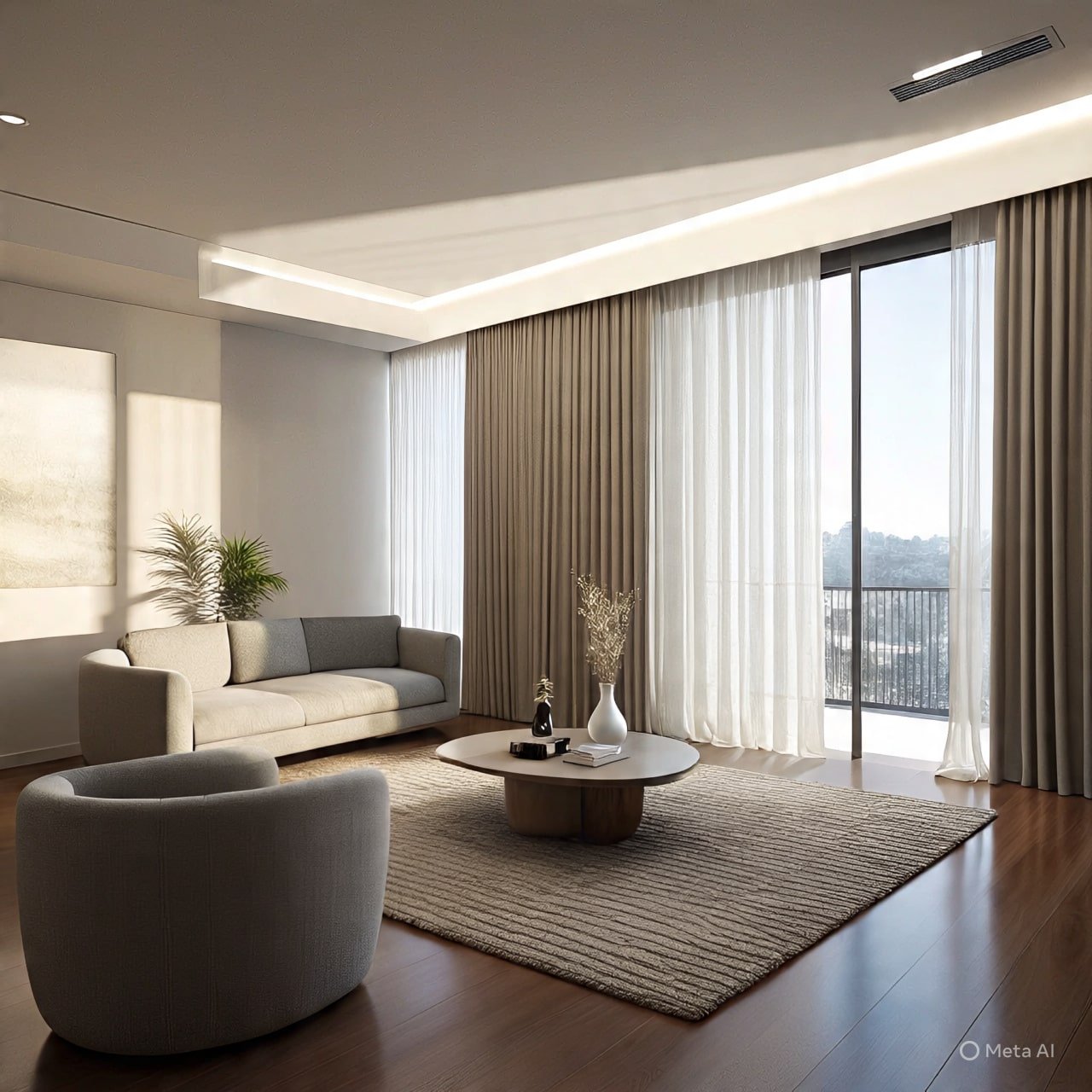Interior Design SEO: How to Attract Style-Driven Clients via Google Search
Why Interior Designers Need SEO in 2025
Your portfolio might be stunning—but if your dream clients can’t find it, it won’t grow your business.
In 2025, the most successful interior designers aren’t just talented. They’re discoverable. High-value clients don’t start with referrals; they start with Google. And they don’t search for “interior designer.” They search for your style: “Japandi apartment interiors Delhi” or “luxury kitchen remodel South Mumbai.”
Generic SEO won’t get you there. Interior design SEO requires a tailored approach that connects your unique aesthetic with the exact phrases style-driven clients use online. See how this differs from general approaches in our High-Value Design SEO playbook.
This guide shows you how to refine keywords, optimize your portfolio, leverage local SEO, and build authority—so you attract fewer but better-fit clients who already value your work.
Key Takeaways
By the end, you’ll know how to:
- Use style-specific SEO keywords to attract aligned clients.
- Optimize your portfolio and service pages for both visuals and conversions.
- Leverage local SEO to dominate your service area.
- Build authority and trust with content and PR.
- Track SEO by clients and revenue—not just clicks.

1: The SEO Mindset for Interior Designers
Why SEO for Interior Designers Is Different
Interior design SEO is unique because:
- Clients search aesthetics, not job titles (“mid-century modern living room designer”).
- Your work is visual-first, so images need proper optimisation.
- Most searches are project-specific (“open-plan apartment layout”).
- Intent is often high—clients searching usually want to hire.
👉 SEO for designers isn’t about traffic. It’s about discovery at the exact moment someone is ready for your aesthetic.
Define Your Style and Ideal Client
Before keywords, clarify:
- Who are your best-fit clients? (Luxury homeowners? Boutique developers?)
- Which styles describe your work? (Bohemian, minimalist, heritage, Japandi).
- Which problems do you solve? (Storage in compact spaces? Smart luxury integration?).
Your SEO should reflect your signature style and speak directly to those client personas. Use the Search-to-SQL Framework to map those personas to commercial queries.
2: Keywords & Website Optimisation
Precision Keyword Research
Stop chasing broad terms. Go niche with:
- Style keywords: “
Scandinavian apartment design Mumbai.” - Luxury terms: “
Bespoke kitchen remodel Delhi.” - Problem-focused: “
How to maximize light in a dark flat.” - Local: “
Interior designer Bandra.”
The goal: The real gold comes from client interviews: ask how they searched before they found you. See our work on keyword intent mapping for architects & designers.
Optimizing Your Portfolio & Service Pages
Your website must look like your brand and work as a sales tool.
- Portfolio: Each project = its own page with visuals + short story (client brief → challenge → solution). See How to Make Your Portfolio Pages SEO-Friendly
- Service Pages: Spell out services clearly (“Luxury full-service interiors,” “E-design consultation”).
- Visuals: Use descriptive filenames (
luxury-living-room-mumbai.jpg), alt text, and light compression for speed. follow Image Optimization Techniques for SEO - CTAs: Add subtle prompts like “Book a consultation” or “Request a portfolio review.”
Your portfolio isn’t just eye candy. It’s your conversion engine.
Most designers lose inquiries here—not because of bad design, but because they rely on generic SEO. At Adswom, we use the Search-to-SQL framework to map your aesthetic and client intent—so the right clients discover you.
3: Technical SEO & Local Presence
Build a Technically Sound Site
A premium site must perform as flawlessly as it looks.
- Speed: Lazy-load images, use WebP/AVIF formats. ( Technical guidance: Technical SEO for Image-Rich Portfolio Sites)
- Mobile-first: Most discovery happens on phones.
- Schema: Add structured data for services, projects, reviews.
- Clear site structure: Logical menus + internal linking.
Local SEO: Be the First Choice in Your Area
Even luxury clients often start locally. If your Google Business Profile (GBP) is weak, you’re invisible.
- Claim and optimise GBP — follow Google Business Profile optimisation for architects & designers
- Add photos, reviews, and service areas.
- Ensure NAP (Name, Address, Phone) consistency across directories.
- Create location pages (“Interior design for South Delhi penthouses”).
Local SEO wins projects in your own backyard—before competitors do.
4: Content & Authority Building
Content That Converts Clients
Not all content works for interior designers. Publish content that builds trust:
- Trends: “Sustainable luxury interiors 2025.”
- Case studies: Show process + before/after photos.
- Videos: Walkthroughs, design process highlights.
- Thought leadership: Opinion pieces on design philosophy or material choices.
Each piece of content should make clients think: “This studio understands my vision.”
Off-Site Authority
Your reputation should extend beyond your website.
- Get featured in design/lifestyle publications.
- Partner with builders or luxury brands.
- Secure backlinks from Houzz, AD, Elle Decor.
- Leverage Instagram + Pinterest with links back to projects — see our guide on SEO for Style-Driven Project Showcases
Backlinks here are not just SEO—they’re prestige.
5: Future-Proofing Interior Design SEO
The search landscape is changing. Stay ahead with:
- AI snippets: Write concise answers for Google’s summaries. (Trends overview: Architecture SEO Trends in 2025).
- Voice search: Add FAQs for conversational queries.
- Visual search: Optimize images for Lens/Pinterest.
- E-E-A-T: Showcase bios, awards, press mentions. (Common pitfalls and fixes: Common SEO Mistakes Architecture Firms Make).
- Sustainability keywords: Clients increasingly search eco-friendly and wellness-driven interiors.
Future-proofing isn’t optional—it’s the only way to ensure your studio’s visibility keeps pace with how clients actually search.
But here’s the catch: it doesn’t matter how many new tactics you try if you’re not measuring the right outcomes. Most designers still focus on vanity metrics like traffic or impressions. That’s not what pays your bills. What matters is how SEO translates into qualified leads and real projects.
6: Measuring What Matters
Don’t measure vanity metrics like raw traffic. Measure what drives business:
- Qualified inquiries from organic search.
- Conversion rates into projects.
- Average project value from SEO leads.
- Rankings for style-specific + local keywords.
SEO success = projects booked, not clicks counted.
Use the framework in Architecture SEO Metrics That Matter — Align KPIs with Revenue Goals to ensure your reporting ties to revenue and pipeline.
SEO for Interior Design Firms
What specific metrics should interior design SEO track?
Track KPIs like organic leads, conversion rate, local pack visibility, and style‑specific keyword rankings—not just traffic.
How long before I see results from interior design SEO?
Expect measurable improvements in 4–6 months, with enhanced visibility and lead quality intensifying over the first year.
Is local SEO necessary if I offer online or remote interior design services?
Yes—Google prioritizes nearby providers. Even remote services benefit from clear NAP listings and optimized Google Business Profiles.
How do I ensure my visual portfolio helps SEO, not hinders it?
Use descriptive filenames, alt-text, next-gen image formats, and fast-loading pages. Combine visuals with narratives, metadata, and schema.
Can I do interior design SEO myself, or should I hire experts?
You can start by optimising keywords, service pages, and visuals. For advanced technical, local, and authority-building strategies, partner with a specialised SEO provider — see our visibility diagnostic & timelines.
Design Your Digital Presence with Intention
Interior design SEO isn’t about traffic—it’s about alignment. With the right strategy, your portfolio becomes a client acquisition engine, connecting your signature style with clients already searching for it.
At Adswom, our Search-to-SQL framework is built for this exact purpose: turning your design aesthetic into a discoverable, trusted brand online.
Ready to turn your portfolio into a client magnet?
👉 Start with a Free Visibility Diagnostic
— and uncover where your studio is losing premium opportunities.
Writing team:

Les't communicate.
Recent Articles
 The Real Cost of Generic SEO for High-End Architecture and Interior Design Studios
The Real Cost of Generic SEO for High-End Architecture and Interior Design Studios
 Why Generalist SEO Fails Designers — And What to Do Instead
Why Generalist SEO Fails Designers — And What to Do Instead
 What to Look for in an SEO Agency: A Strategic Guide for Architects and Design Firms
What to Look for in an SEO Agency: A Strategic Guide for Architects and Design Firms

